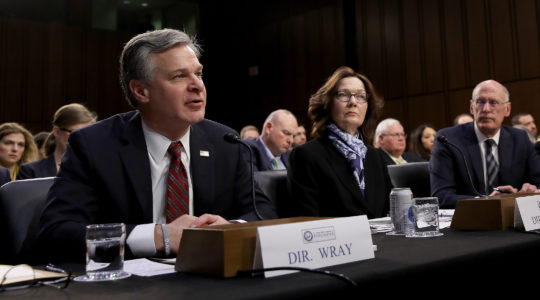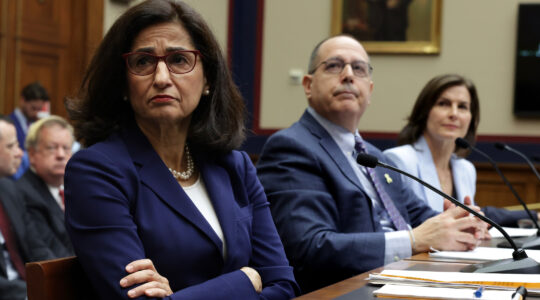The JUF-Jewish Federation of Metropolitan Chicago thinks that it has a formula to help solve the “cost of day school” problem.
The Chicago federation has started building an endowment – dubbed the Jewish Day School Guaranty Trust Fund – to give every day school in the metropolitan area a grant for each of its students. The endowment is like most others in that it pays a percentage of its assets, in this case 6.5 percent, to the cause it supports. But by collecting the funds to build the corpus of the endowment in a non-traditional way, the federation was able to increase the amount of money it was giving out over the last two years by 2,000 percent.
The federation is collecting major pledges from donors that can be paid off over 10 years, but … as soon as the first installment arrives, the federation starts paying off an amount commensurate to the total pledge. To put it in simple dollar terms: The endowment pays 6.5 percent. Donor A pledges $1 million to be paid off over 10 years. As soon as the donor pays the first $100,000 installment, the federation will give $65,000 in interest to the day school subsidy as if it already has the entire $1 million in hand, as opposed to the $6,500 it would give on $100,000.
In addition, according to Steve Nasatir, the federation’s CEO, the federation is giving a 10 percent bonus on the first installment, so it would add another $10,000 on to Donor A’s hypothetical gift.
The federation is making the payments from a low-interest $40 million line of credit that it took out from a bank.
This is not for low-stakes donors, Nasatir said. “We’re looking for gifts in the amount of $1 million or $100,000. We’re not interested in less than that, though we would say thank you for the donation.”
The approach – which Nasatir calls front-end loading - has been wildly successful since it was started in 2006.
The federation actually opened the endowment to subsidize day schools in 2000. But in its first six years it gained no traction, collecting only a few million dollars in pledges. “We found during the first six years we picked up some gifts here and there, but nothing special,” he said.
But since the federation started the front-loading method, 110 donors have stepped forward, pushing the anticipated value of the endowment to $27.5 million.
Though it only has collected between $4 million and $6 million worth of pledges, the federation paid out more than $1.5 million to 15 of the area’s 16 day schools this year, amounting to $330 per student. (One school did not want to participate in the program because it is an exclusive private school that charges about $24,000 per year in tuition.)
The endowment has garnered support from the Jewish community across the religious spectrum, as rabbis and communal leader from every denomination are involved in soliciting donors, Nasatir said.
Nasatir added that he is not worried about the economy in this case because all of the donations are coming from mega-donors, and while some have been hurt financially, most are in position to weather the blow. Only a couple of donors have not followed through with the second installment of their pledges, he said.
The federation exec hopes that the model catches on and thinks that large federations are in a particularly good position to do so because they can secure the low-interest loans necessary to pull off the front loading.
“This will work in a lot of places,” he said. “We can’t think that all day schools’ problems will go away, but it will help if big federations can do all that they can, and this is not heroic work. it is just smart.”
The financials, in case you were wondering how this could work:
The federation is paying off the interest on the loan borrowing from the line of credit, according to its CFO Michael Tarnoff. It might sound like a risky move, but Tarnoff said that he is not concerned in the least. It will work as long as the endowment earns 3 percent more than the interest rate on the loan over the course of the loan, then the federation will be set. In that case, the loan can be repaid in full simply by using the interest on the endowment.
The federation borrowed at a rate of .5 percent over the London Interbank Overnight Rate, which as of Friday afternoon was 2.8 percent – which means that the federation is paying 3.3 percent on the loan. In order to pay off the loan, if that rate stayed stagnant, the endowment would have to earn 5.5 percent on its corpus. Over the course of 10 years, the federations endowments typically average 8 percent.
Tarnoff is not worried about the tanking economy because even if there is a full blown recession for five years, the economy will most likely bounce back by the time the loan is due. In an absolute worst case situation in which the endowment loses money over the course of the loan, the federation would have to discontinue the program. But all investors are made aware of that risk and besides, Tarnoff says, the chances of that happening are “one in a trillion.”
“If you look back through history, there has been no period where investments were bad enough over a long enough period of time for that to happen,” he said. “And that includes 1929.”





